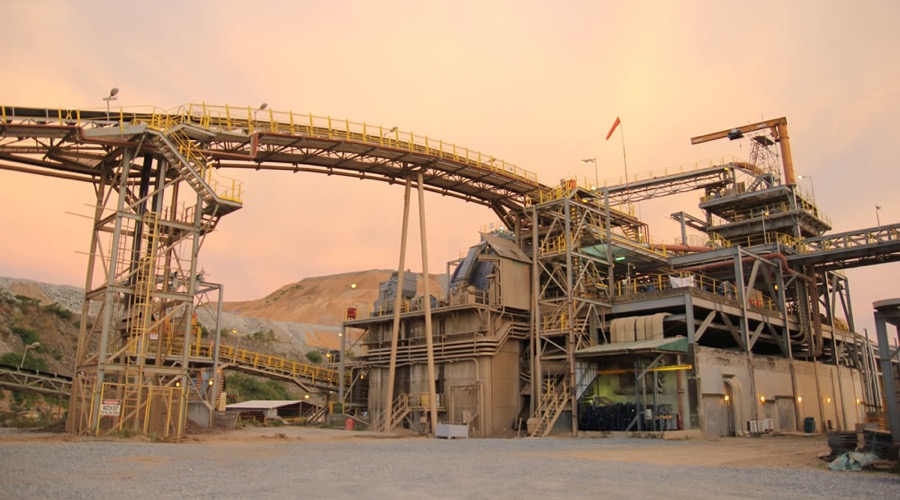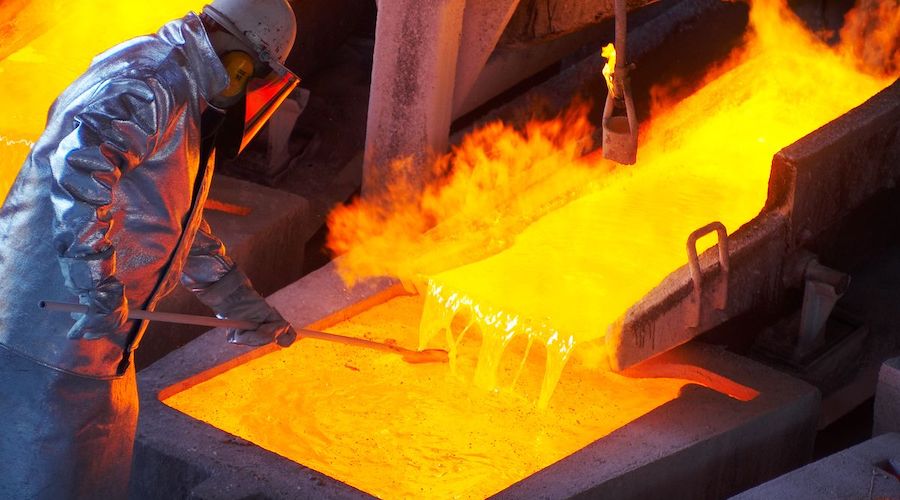This Canadian miner went from zero to a $4bn company in eight years

With gold prices posting the best first half in almost four decades, the coming round of earnings reports may show that bullion miners are finally ready to start spending again.
But while most have been focused on surviving a prolonged bear market, Vancouver’s B2Gold Corp. (TSX:BTO) has been on a buying spree.
In eight years, the company has gone from being a junior miner with no production to an owner of four producing gold mines – with a fifth on its way – producing 550,000 ounces of gold annually and with a $4 billion market cap.
Now one of the world’s fastest growing intermediate-sized gold producers, B2Gold is poised to enjoy a windfall from a gold bull market and has been basking in the accolades of mining equities analysts.
With production expected to nearly double, from 500,000 ounces of gold in 2015 to 850,000 in 2018, B2Gold is “pretty well the top in our universe,” said Michael Gray, mining equities analyst at Macquarie Capital Markets.
Since it was formed in 2007, B2Gold has built two new gold mines and bought two others.
“It’s definitely one of the fastest growing. They’re going to be growing to about 900,000 ounces per year by 2018. That would put them just slightly below Eldorado Gold in terms of size and production.”
The company’s founder and CEO, Clive Johnson – who has been known to get into verbal and even physical dustups with detractors – is a self-professed contrarian who scorns the “herd mentality” he sees within his industry.
It’s that contrarian attitude that has again made him and his team a rising star in the mining sector.
Since it was formed in 2007, B2Gold has built two new gold mines and bought two others. Some of that activity took place while mining was in a prolonged slump and pressure was on the majors not to spend any money on new mines.
“Two years ago, the gold sector was saying, producers were saying: ‘No acquisitions. We want to cut our costs, we don’t know where gold’s going,’” Johnson said. “That allowed us to do deals like Otjikoto in Namibia. There was virtually no competition because no one else was looking to buy projects and develop them.”
B2Gold has already shaped up to be a sequel to one of Johnson’s other success stories: Bema Gold.
Starting out as a mining contracting company, Bema got into exploration, and developed mines in Chile and, later, in Russia. In 2007, with a market cap of $3.5 billion, Bema was acquired by Kinross Gold Corp (TSX:K). Johnson and his team – five other former Bema executives – then formed B2Gold with plans “to do it again.”
It was Johnson’s track record with Bema that helped the company raise money when banks and investors were starting to avoid the mining sector like the plague.
The company raised $100 million in an initial public offering in 2007, listed on the TSX Venture Exchange, graduated to the big board in 2008, and in 2009 zeroed in on Nicaragua, where it found Central Sun, a company with a small operating gold mine.
Its Central Sun purchase allowed it to immediately become a gold-producing mining company with a revenue stream.
“We had a lot of backers who really liked the management team, so in a bad market we said to them, ‘We can build this mine and we can do it well,’” Johnson said. “We did it and everybody did well. The banks made money, the shareholders made money.”
The company then acquired a producing gold mine in the Philippines, the Masbate, for $1 billion when it bought Australian mining company CGA Mining Ltd.
Next was an undeveloped gold property in Namibia, which B2Gold acquired and developed into the Otjikoto mine. It then went to Mali where it found the Fekola project, which it acquired after a $US570 million takeover of Papillon Resources. The mine is scheduled to produce its first gold later in 2017.
“In the case of Fekola, which still surprises me, is the fact that the Fekola project in Mali was recognized three years ago as one of the best undeveloped gold projects with a feasibility study and a permit in the world,” Johnson said.
Other mining companies were still dealing with massive write-downs from having overspent – when gold prices were high – on marginal projects, so there was little competition.
“We acquired it when no one else was able to compete or willing to compete,” Johnson said. “No one else bid because of the herd mentality and because they had done bad deals in the past.”
Once it goes into production, the Fekola mine will produce an estimated 350,000 ounces per year at an operating cost of $400 per ounce.
Fekola was financed through a $350 million credit facility, with the balance coming from B2Gold’s revenue stream and prepaid sales.
After gold prices fell below US$1,100 per ounce late in 2015, B2Gold’s share prices tanked, dropping to a low of $0.86 per share in January. Investors feared that the gold price drop would leave the Fekola project with a funding shortfall.
With gold now trading above US$1,300 per ounce and entering what is believed to be a bull market, gold mining stocks in general are back up. Last week, B2Gold’s stock was in the $4 per share range, and Gray has a buy target of $5 per share.
Asked if he fears B2Gold will become the target of a takeover like Bema Gold was, Johnson said he thinks the company is well positioned to withstand such advances. He said the company’s several large investors are “thrilled” with B2Gold’s performance, and would likely reject all offers.
“I’m not particularly worried about that now because the recent surge in our share price, outperforming virtually all producers, means we are getting closer to our real value,” he said. “Any bidder would need to offer a very high premium to make it attractive to our shareholders.”
{{ commodity.name }}
{{ post.title }}
{{ post.date }}

Comments